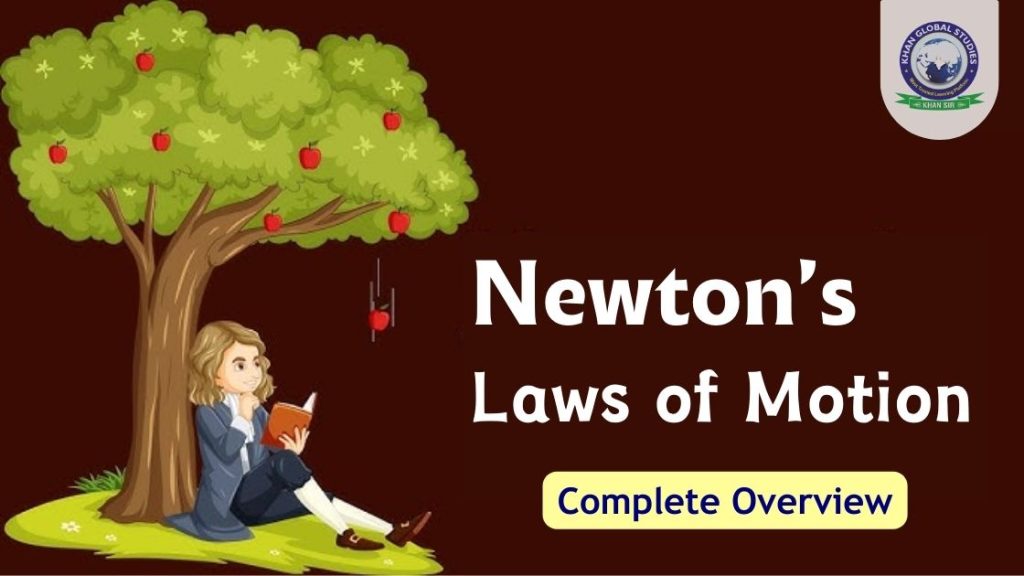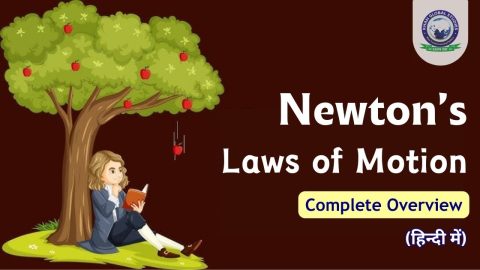Newton’s laws of motion are fundamental principles of physics that explain how objects behave when forces are applied to them. Let’s explore these laws and look at real-life examples to understand their importance.
Introduction to Newton’s laws of motion
The famous English mathematician, physicist and astronomer Sir Isaac Newton introduced the laws of motion in his seminal work “Philosophy Naturalis Principia Mathematica” (Mathematical Principles of Natural Philosophy) in 1687. These laws laid the foundation for classical mechanics, revolutionizing our understanding of motion and dynamics.
1. Newton’s first law of motion: Law of Inertia
Newton’s first law states that an object will remain at rest or in uniform motion unless an external force is applied on it. In simple words, objects maintain their state of motion unless an external force changes it.
Practical Applications
- Inertia: Understanding Newton’s first law helps explain why passengers lean forward when a moving vehicle suddenly stops.
- Space Exploration: NASA uses the concept of inertia to propel spacecraft through space with minimal energy expenditure.
Example: Imagine a soccer ball resting on a flat field. The ball will remain stationary until someone kicks it by applying an external force. Similarly, a car will continue to move at a constant speed until the brakes are applied, which causes a force to be applied to slow it down.
2. Newton’s second law of motion: Law of Acceleration
Newton’s second law states that the acceleration of an object is directly proportional to the total force acting on it and inversely proportional to its mass. In mathematical terms, F=ma, where F is the applied force, m is the mass of the object, and a is the acceleration produced.
Practical Applications
- Calculating Force: Newton’s second law provides a framework for calculating the force required to accelerate an object of known mass.
- Sports Performance: Athletes and coaches use Newton’s second law to optimize performance in various sports by understanding the relationship between force, mass, and acceleration.
Example: Consider two cars of different masses, one of which is heavier than the other. If the same force is applied to both cars, the lighter car will experience greater acceleration due to its lesser mass. Conversely, a heavier car will accelerate less due to its greater mass.
3. Newton’s third law of motion: Law of Action and Reaction
Newton’s third law states that every action has an equal and opposite reaction. In other words, when one object exerts a force on another object, the other object exerts an equal force in the opposite direction.
Practical Applications
- Rocket Propulsion: Rocket engines work on the principle of Newton’s third law, expelling exhaust gases downwards to generate upward thrust.
- Swimming: Swimmers push against the water with their arms and legs, causing the water to push back with equal force and propel them forward.
Example: When you push a wall, you apply force on it. According to Newton’s third law, the wall pushes back with equal force in the opposite direction, preventing you from moving forward. Similarly, when a rocket engine expels gases downwards, the gases exert an equal force upward, propelling the rocket forward.
Conclusion
Ultimately, Newton’s laws of motion serve as the cornerstone of classical mechanics, providing a framework for understanding the fundamental principles governing motion and dynamics. From the law of inertia to the law of action and reaction, these timeless principles shape our understanding of the physical world and inspire unprecedented discoveries in science and technology. So, the next time you observe the motion of objects around you, remember the profound insights of Sir Isaac Newton and the lasting legacy of his laws of motion.
FAQs
Question: What is Newton’s first law?
Answer: An object will remain at rest and an object in motion will continue to move with a constant velocity unless an external force is applied on it.
Question: What is Newton’s second law?
Answer: The force acting on an object is equal to its mass times its acceleration. (F=ma)
Question: What is Newton’s third law?
Answer: Every action has an equal and opposite reaction.





